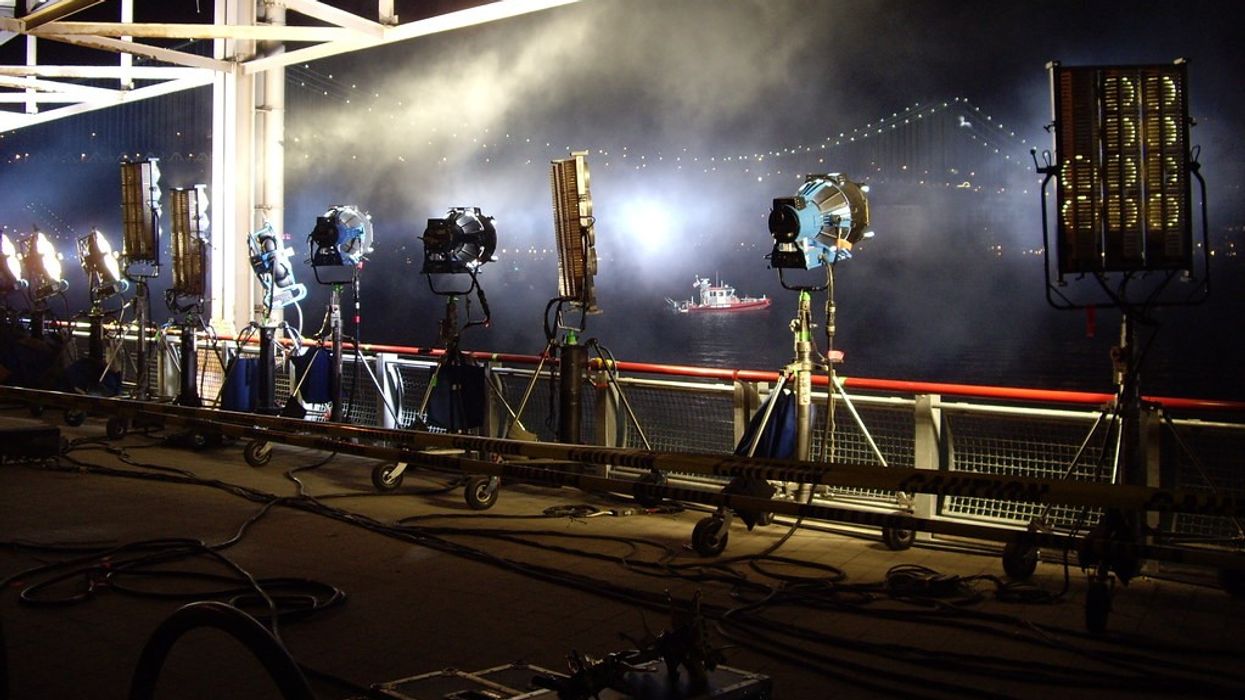Do You Know All These Film and TV Lighting Terms?
We go deep into how you can control a scene with illumination.

Movie lights on I am Legend
Flickr
Lighting plays a pivotal role in shaping the mood, atmosphere, and visual narrative of films and television. From the soft glow of a romantic scene to the stark shadows of a suspenseful thriller, the way light is manipulated transforms the ordinary into the extraordinary.
Understanding the various film and TV lighting techniques is like learning the vocabulary of visual storytelling.
So let's go into some of the most popular ways to light your projects.
Film and TV Lighting Dictionary
Basic Lighting
- Key Light: The primary light source focused on your subject. It determines the main direction and feel of the lighting in the scene.
- Fill Light: A softer light placed on the opposite side of the key light. Used to reduce harsh shadows and add dimensionality.
- Backlight: A light positioned behind the subject. It creates a rim of light that helps separate the subject from the background.
- Three-Point Lighting: The standard lighting setup using a key light, fill light, and backlight.
- Practical Light: A light source that exists within the scene itself (lamps, candles, streetlights, etc.). Can create atmosphere and a sense of realism.
Lighting Styles
- Hard Light: Light that produces distinct, sharp-edged shadows. Creates contrast and a sense of drama.
- Soft Light: Diffused light that produces softer shadows. Can create a flattering effect for portraits or dream-like sequences.
- High-Key Lighting: Even, bright lighting with minimal shadows. Often used for a cheerful, optimistic mood (sitcoms, commercials).
- Low-Key Lighting: High-contrast lighting with deep shadows and dark areas. Used for a dramatic, mysterious, or suspenseful mood (film noir, horror).
Specialized Techniques
- Bounce Light: Light bounced off a surface (like a wall or reflector) for indirect, soft illumination.
- Chiaroscuro: Extreme use of high-contrast lighting for powerful dramatic effects.
- Motivated Lighting: Light that appears to come from a realistic source within the scene, adding to the believability.
- Colored Lighting: Using colored gels or filters to create a specific mood or effect (red for danger, blue for sadness).
- Silhouette: Subject is lit from behind, appearing dark against a brighter background. Can be used for mystery or a dramatic emphasis on shape/form.
More Techniques
- Hair Light: A light placed behind and above the subject, aimed specifically at their hair to add separation and a soft glow.
- Kicker Light: A light placed behind and slightly to the side of the subject that creates a sharp outline and adds dimension.
- Eye Light: Small light source used to add a catchlight in the subject's eyes, making them "pop" and appear more lively.
- Background Light: Illuminates scenery or objects behind the subject, adding depth or highlighting specific background elements.
- Cameo Lighting: Creates a soft pool of light around the subject, fading gently into a dark background for a more isolated feel.
- Negative Fill: Using black flags or objects to block existing light and create even deeper shadows.
Additional Considerations
- Light Quality: Beyond hard and soft, consider the specific quality of light sources:
- Tungsten lights: Warmer tones
- HMI lights: More daylight balanced
- LEDs: Variable color temperatures and effects
- Color Temperature: Measured in Kelvin, refers to the warmth or coolness of the light, impacting the overall mood.
- Flags and Gobos: Black fabric (flags) or patterned cutouts (gobos) used to block or shape light.
- Diffusers: Materials placed in front of lights to soften their output (gels, silks, scrims, etc.).
- Reflectors: Bounce existing light for fill or indirect lighting (can be professional reflectors or makeshift like white boards).
Let me know what you think we missed in the comments!
From Your Site Articles
- How Far Can You Push the Blackmagic Cinema Camera in Low-Light? ›
- Watch: Basic Lighting Lingo for First-Time Filmmakers ›
- Intro to Lighting: Terms, Techniques, and Concepts You Need to Know ›
Related Articles Around the Web
cinematiccinematic film lookcinematic lightingcinematic televisionfilm lookhollywood lightinglighting for televisionnarrative lightingnatural lightingsingle camera cinematographysingle camera filmingsingle camera lightingtelevisiontelevision cinematographytelevision lightingtv lighting techniqueslighting terms











